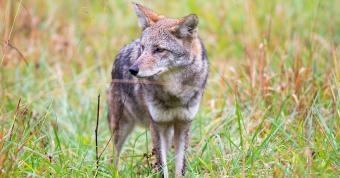
But, ultimately, the solution to both problems is the same: education. Of course, that is a bit of an oversimplification. Having the conversation with someone, particularly on social media, where inhibitions and reason tend to float disconnected from many. And that’s why at The Fur-Bearers, we’ve taken three common arguments from people who are either unaware and defensive of their fur choices, and provided you with the facts to respond – with citations.
1. Fur trapping is humane. This is one of the fur industry’s greatest lies. Traps are humane – because they put it on a trade agreement. The document the fur industry heralds as evidence for their “humane” or “certified” traps is not based in science, or approved by wildlife veterinarians. It is, in fact, a trade agreement that was created when the European Union wanted to stop the importation of fur taken from animals who were caught and/or killed in barbaric leg-hold traps. All information used in the trade agreement is derived from fur industry-funded trap testing (with magnificent failure rates). Citation: Environment and Climate Change Canada
2. Fur is a green option. It kind of makes sense, at first, and that’s what makes this con so convincing. But the science is clear: fur is far from green. Farmed fur means thousands – up to hundreds of thousands – of predatory wild animals living in small cages. The sheer amount of urine and feces produced is shocking, and all that waste needs to go somewhere – just like the unused carcasses of the animals killed, once their fur is removed, need somewhere to go. From there, chemicals are used in the treatment of furs so they don’t immediately waste away (because fur will naturally break down relatively quickly). Studies into the fur industry repeatedly show unsettling trends – and those can be read for themselves. Citation: Our great big list of science
BLOG: More fast facts for advocates
3. Every part of the animal was used. The idea of the romanticized sustenance hunter or trapper is based in reality – there are people who live purely off the land they inhabit, and who use every part of animal. But when it comes to commercial trapping, the goal is to kill the animal and get the fur – and the rest goes to waste, as it has no value. Citation: Saskatchewan Fur Program/Code of Conduct
We’ll be bringing you more of these fast facts as the season progresses – feel free to send us the ones you hear the most about on Facebook, Twitter, or via email, and we’ll address them, too!
Please remember to stay compassionate and stick with the facts when discussing fur use. And we know that you’ll help to #MakeFurHistory.
monthly donor(for as little as $5/month – the cost of a single latte) pleaseclick hereand help us save lives today.

